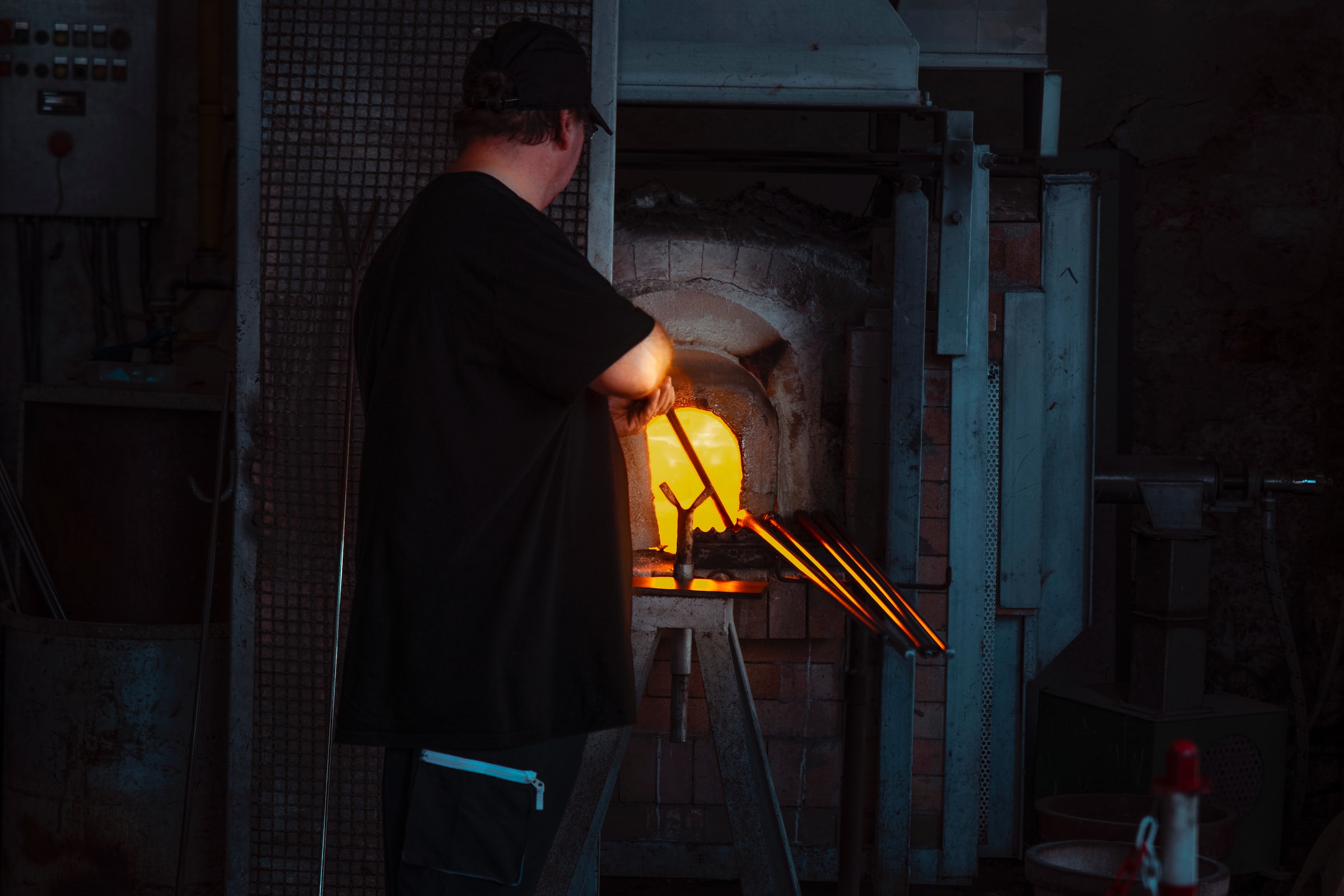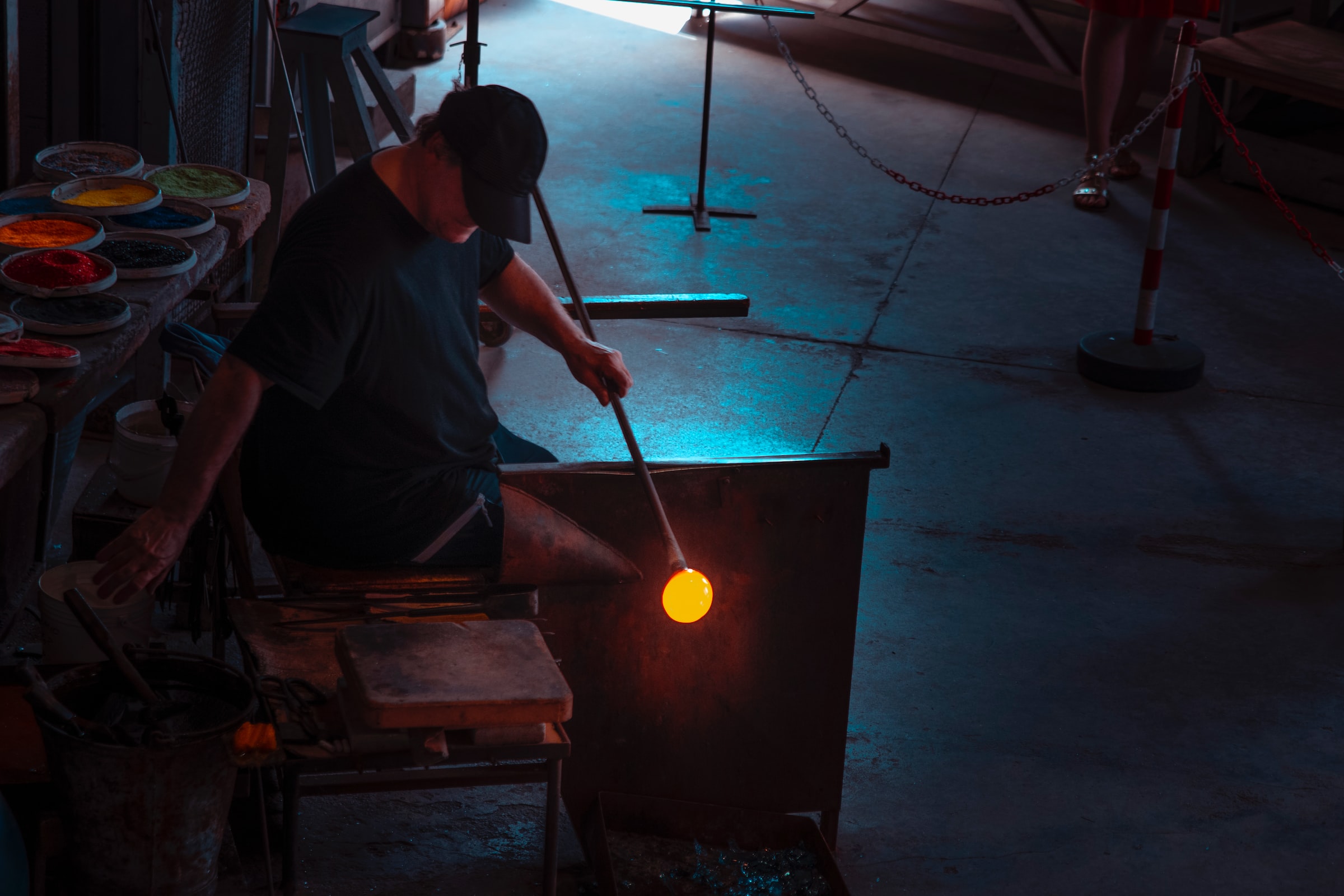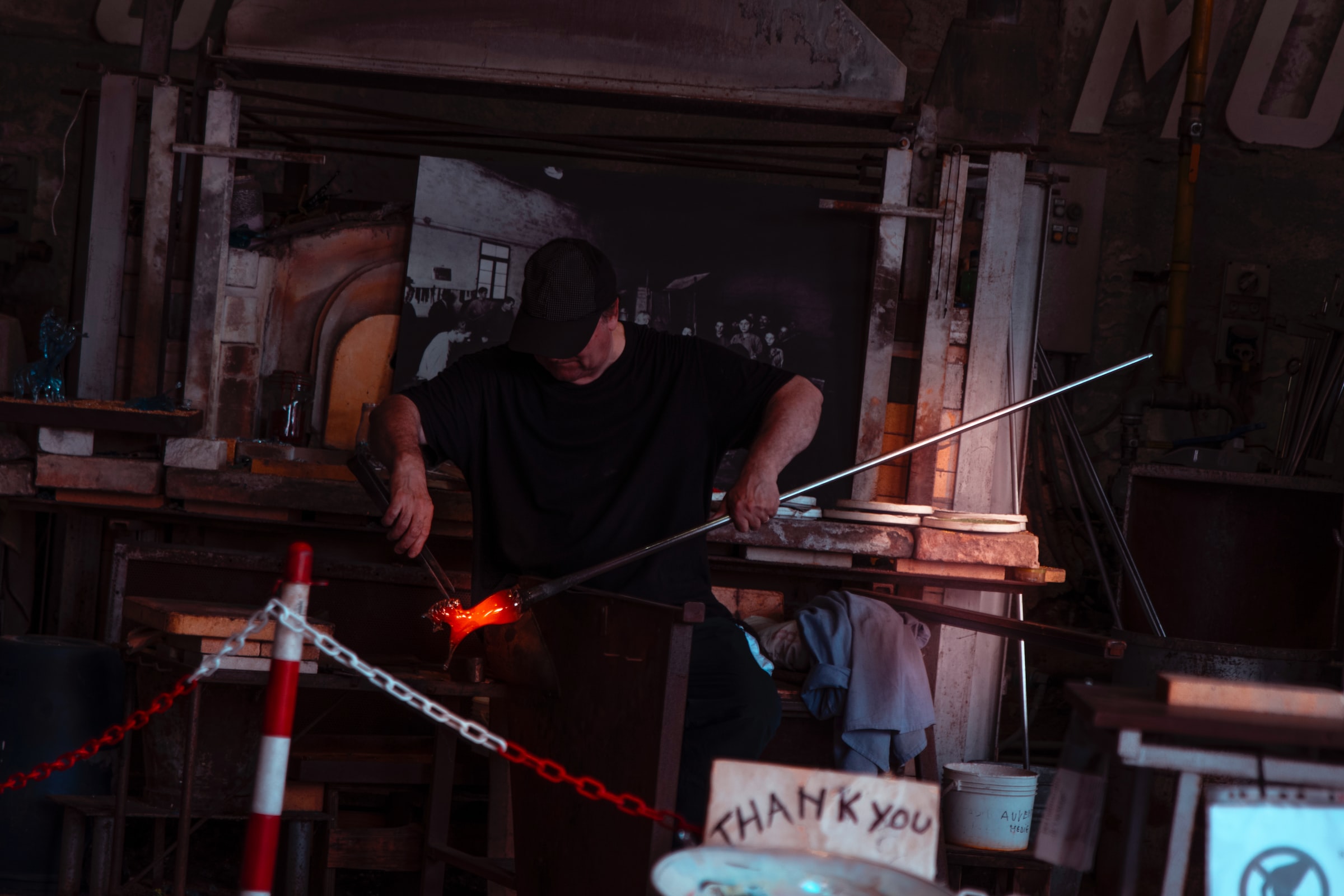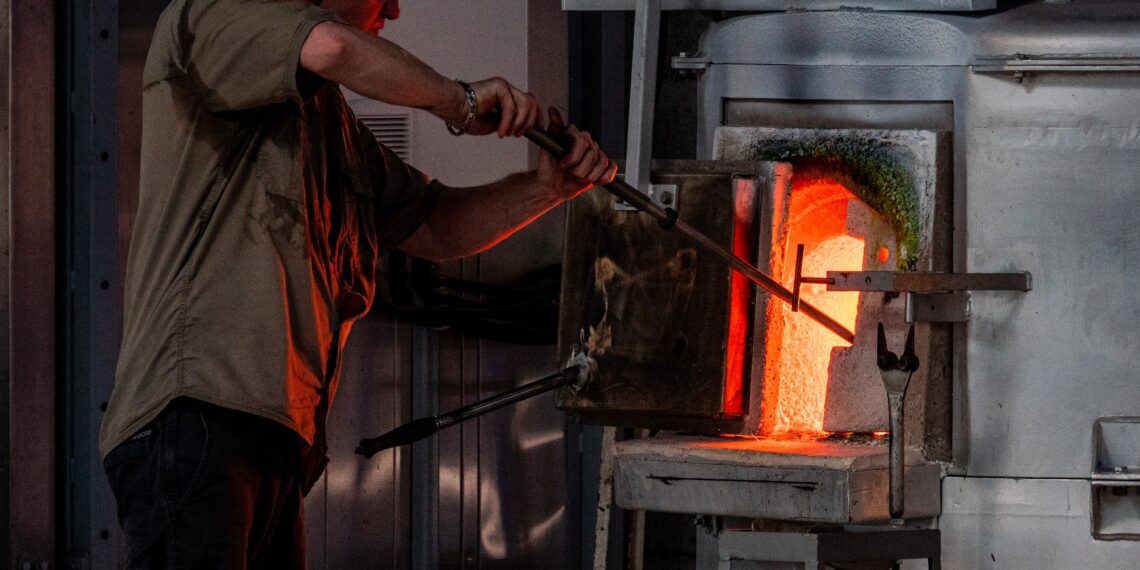There are many myths surrounding the glassblowers’ tube in their mouth. Some say it is to keep the flame from going down their throat, while others believe it is used to control the size and shape of the flame. But why do glassblowers have a tube in their mouth? To find out, read on!
The History of Glass Blowing

The process of glass blowing is simple: molten glass is blown into shapes by the use of a tube-shaped object called a blowpipe. Today, there are many different types of glassblowing tools and techniques, but the basic process is still the same.
Glass blowing has been around for centuries. At old times, glassmaking was a highly skilled craft, and glass blowers were considered some of the most skilled artists in the world.
Today, glass blowing is a popular art form all over the world. The techniques and tools used to create glass objects have evolved over the years, but the process of crafting beautiful glass objects is still essentially the same. Whether you’re a beginner or an experienced artist, learning how to blow glass can be fun and rewarding.
What is a Tube Blower and What Does it Do?

A tube blower is a tool used in glass blowing that helps to create a smooth, even surface on the glass. It is inserted into the blowpipe and uses air pressure to distribute heat evenly over the surface of the molten glass. This heat creates a smooth, even surface on the glass that is easy to work with.
Tube blowers are typically used to create small objects, such as lamps and figurines. They are also commonly used in glass blowing workshops to help create smooth, even surfaces on the glassware that is being created.
By using a tube blower, glass artists are able to create products that are of a higher quality due to the smooth, even surface that is created. Additionally, tube blowers are relatively easy to use and can be a great tool for beginners who want to learn more about glass blowing. Glass blowing lathe, on the other hand, is a more advanced tool that is used to create larger objects.
How a Tube Blower Works?
Glassblowers use a tube in their mouth to blow glass. The tube helps to control the amount of air that is blown into the glass, which creates a more consistent and controllable flame.
The flame is created when the glassblower blows a stream of air into the glass. This high-pressure air creates a hot gas, which in turn ignites the volatile chemicals in the glass. The heat from the flame then melts the glass, which is forced out of the tube and into the air.
The tube blower’s job is to control the flame and make sure that the glass maintains a consistent shape. If the flame is too hot, it will melt the glass too quickly, and if the flame is too cool, the glass will not heat up enough to melt.
The Parts of a Tube Blower
Glass blowers have a tube in their mouth because it is the best way to blow the glass without getting it all over you and the workbench. When blowing glass, you need to keep the molten glass moving quickly and evenly. This is done by using a continuous stream of air from the tube blower.
The other parts of a tube blower are the air intake and the air exhaust. The intake is on the front of the machine and the exhaust is on the back. The air intake allows air into the machine, while the air exhaust lets out the heated air.
The motor is the heart of the tube blower. It uses a rotating shaft to create the airflow and it is usually powered by an electric or gas engine. The speed of the air flow can be controlled by the throttle on the side of the machine.
Types of Tubing

Glass blowers have a tube in their mouth because it is the best way to move the hot gas and molten glass. The tube helps to protect the glassblower’s throat and lungs from the intense heat and fumes that come with blowing glass.
The other types of tubing used in various crafts include:
- Nylon: Used in a variety of crafts, including making string, fishing line, and rope. Nylon is strong and can withstand a lot of abuse.
- Rubber: Used in making balloons, toy cars, and children’s gloves. Rubber is soft and flexible, which makes it easy to work with.
- Plastic: Used for containers such as water bottles and food containers. Plastic is lightweight and relatively inexpensive, which makes it a popular choice for craft projects.
How to Blow Glass with a Tube Blower ?
If you are interested in learning how to blow glass using a tube blower, there are a few things you should know.
- First, the tube blower is an important tool for anyone who wants to learn how to blow glass. It’s easy to use and the results are impressive.
- Second, you need to be careful when blowing glass. If you don’t use the right techniques, your work can quickly become dangerous and unpleasant.
- Finally, it’s important to have patience when learning how to blow glass. It may take some time before you achieve the results you desire.
Conclusion
Glass blowers have a tube in their mouth for a very specific reason: to blow glass. This amazing craft has been around for centuries and involves heating glass until it becomes malleable, then shaping it into any type of object you can imagine. If you’re ever interested in learning more about glass blowing, be sure to check out one of the many online courses available.




